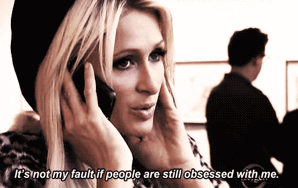Crazy’s Double Standard
When it’s convenient for the public, they will romanticize mental illnesses; when inconvenient, however, they will demonize them.
By ![]() Rachel Hodin
Rachel Hodin

To observe Amanda Bynes in these recent months is to be reminded of the immense pleasure the general public gets from her visible turmoil. It brings to minds the past reactions to Lindsay Lohan’s deviant escapades or Britney Spears’ head-shaving stint. In all of these cases, these girls were clearly going through some mental disturbances and we, the public, could not have been less empathetic. But how about other notable victims of mental illness such as Kurt Cobain and Virginia Woolf, whose inner troubles engendered real misery and heartbreak amongst their fans? How does one account for this? Or, more precisely, where do mental illnesses stop being a sad, lamentable sight, and start being entertaining, titillating ones?
While Amanda Bynes and Lord Byron seem to be worlds apart, they are actually much more similar than one might suspect. For every one of Bynes’ green wigs, scary selfies, and odd tweets, Bryon had an equally weird habit. At Cambridge, the poet had a pet bear, which he walked on a leash throughout the University. After graduating, he housed a whole zoo of animals including ten horses, eight enormous dogs, three monkeys, five cats, an eagle, a crow, a falcon, five peacocks and two guinea hens. And when he got older, he apparently spent days at a time simulating naval warfare with a fleet of toy ships, while crouched behind a makeshift fort. In light of this, doesn’t Bynes’ extolment of plastic surgery seem much more tame?
Or how about Britney Spears’ and Kurt Cobain’s mental issues, which were both so similar in nature, but prompted such disparate reactions from the public? Celebrity culture is what was ultimately plaguing these two. Like WWI, which blew everything and practically everyone to pieces, serving as a tragic reminder of the tininess of one human life, celebrity culture made these two acutely aware of this exact truth. By shaving her head, Spears seemed to be ridding herself of the unrealistic expectations celebrity culture necessitates. And of John Lennon, Cobain said, “I just felt really sorry for him. To be locked up in that apartment. Although he was totally in love with Yoko and his child, his life was a prison. He was imprisoned. It’s not fair. That’s the crux of the problem I’ve had with becoming a celebrity—the way people deal with celebrities. It needs to be changed.”
When it’s convenient for the public, they will romanticize mental illnesses; when inconvenient, however, they will demonize them. For, haven’t we all heard the lauding of crazy intellectuals or brilliant mad men, such as Ludwig Van Beethoven or Van Gogh? Even in Katherine Dalsimer’s biography of Virginia Woolf, she asks if Woolf’s illness was “a terrible, wasteful obstacle to her creativity—or the necessary condition for it?” But when it comes to Amanda Bynes, we label her behavior as “crazy,” “egomaniacal” and “a breakdown.” Much like our tendency to label her as crazy, a common tendency during WWI was to tidy up a colossal bloodbath by calling it a battle and giving it a title. But the word “battle” or “crazy” gives these tragic events a clarity that the actual experience belies. The Battle of the Somme, for instance, was really a massive carnage that went on for an excruciatingly long time. And Bynes’ “crazy” manners are certainly not as simple as that.
Much like the first stanza in William Wordsworth’s “A Slumber Did My Spirit Seal,” the public seems to be in a state of “slumber,” or ignorant bliss, when faced with Bynes’ and Spears’ mental illnesses. In this state of ignorance they, like Wordsworth, see these desperate, ailing people as “a thing that could not feel.” But feel they certainly can! In fact, it seems that the ability to feel too much was what ultimately plagued Kurt Cobain and Virginia Woolf, and continues to plague Britney Spears and Amanda Bynes. ![]()




